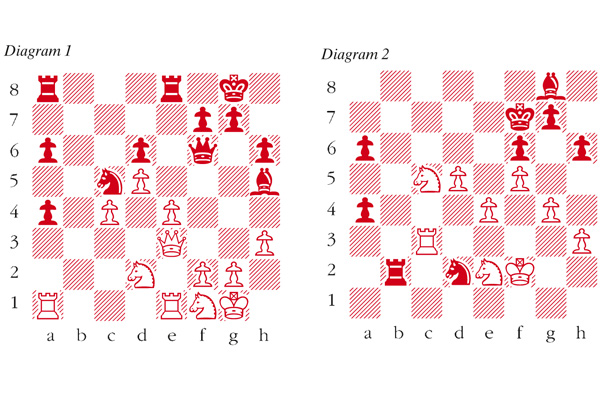This Christmas and New Year I am publishing a series of tributes to players in great London games. This week, examples of play by Capablanca, who won the great tournament at London in 1922, and Lasker, who stormed to victory in London 1899. The Capablanca game in particular is a mighty struggle which still causes controversy to the current day, in view of his bold attempt to exclude Black’s queen’s bishop from active operations.
Capablanca-Bogoljubow: London 1922; Ruy Lopez
1 e4 e5 2 Nf3 Nc6 3 Bb5 a6 4 Ba4 Nf6 5 0–0 Be7 6 Re1 b5 7 Bb3 d6 8 c3 0-0 9 d4 exd4 10 cxd4 Bg4 11 Be3 Na5 12 Bc2 Nc4 13 Bc1 c5 14 b3 Na5 15 Bb2 Much stronger is Fischer’s plan 15 d5! Nd7 16 Nbd2 Bf6 17 Rb1. Now, however, Black is able to exchange the formidable ‘Spanish’ bishop and to gain the advantage of the two bishops. 15 … Nc6 16 d5 Nb4 17 Nbd2 Nxc2 18 Qxc2 Re8 19 Qd3 h6 20 Nf1 Nd7 21 h3 Bh5 It was quite unnecessary to hold on to the bishop, and by 21 … Bxf3! 22 Qxf3 Bf6 Black would have achieved the dream of any Modern Benoni devotee. 22 N3d2 Bf6 23 Bxf6 Qxf6 24 a4 c4 This move gives Black a passed pawn, but on the other hand it helps White to carry out his purpose of blocking off the bishop at h5. 25 bxc4 Nc5 26 Qe3 bxa4 (see diagram 1) 27 f4 The consistent implementation of the plan — Capablanca’s iron principle. 27 … Qe7 28 g4 Bg6 29 f5 Capa cuts off the bishop from the main battlefield, but it can after all come into play, and in addition Black has a strong passed pawn. The evaluation of the position is as yet far from clear. 29 … Bh7 30 Ng3 Qe5 31 Kg2 Rab8 32 Rab1 f6 32 … Rb2 came into consideration, for example: 33 Re2 Rxb1 34 Nxb1 Rb8 35 Nd2 Rb2 with counterplay. 33 Nf3 Rb2+ 34 Rxb2 Qxb2+ 35 Re2 Qb3 36 Nd4 Qxe3 36 … Qxc4 was much better. The queens should have been retained for the reason that White’s king is bad, and this was an additional chance for Black. After 36 … Qxc4 37 Rc2 Qxd5 38 Ne6 Black has 38 … Qb3. Of course, 37 Ne6! is stronger, but after 37 … Rb8 the position is completely unclear. 37 Rxe3 Rb8 38 Rc3 Kf7 39 Kf3 Rb2 40 Nge2 Bg8 41 Ne6 White now clearly stands well. 41 … Nb3 42 c5 dxc5 43 Nxc5 Nd2+ 44 Kf2 (see diagram 2) 44 … Ke7 44 … Nb1 was the only way to continue to set White problems. One remarkable variation is 45 Rc4 a3 46 Ne6 a2 47 Rc7+ Ke8 48 d6 Bxe6 49 fxe6 Rb8 50 Rxg7 Kf8 51 Rf7+ Kg8 52 Rb7 Rxb7 53 d7 a1Q 54 e7 Rxd7 55 e8Q+ Kg7 56 Qxd7+ Kg8 57 Nd4 and White should win. 45 Ke1 Nb1 46 Rd3 a3 47 d6+ Kd8 48 Nd4 Rb6 49 Nde6+ Bxe6 50 fxe6 Rb8 51 e7+ Ke8 52 Nxa6 Black resigns
Raymond Keene
London greats

issue 15 December 2012




Comments